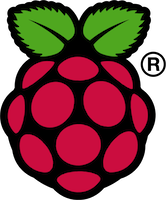We've launched our new site at www.openlighting.org. This wiki will remain and be updated with more technical information.
Difference between revisions of "OLA Raspberry Pi"
From wiki.openlighting.org
(→Reboot & First Login) |
(→Select your Image) |
||
| Line 21: | Line 21: | ||
= Select your Image = | = Select your Image = | ||
| − | At this point you need to decide what version of OLA you want to use. | + | At this point you need to decide what version of OLA you want to use. Images are in the [http://code.google.com/p/open-lighting/downloads/list Google Code Download Site] |
==GIT Repo== | ==GIT Repo== | ||
| Line 31: | Line 31: | ||
Use this option if you prefer a more stable system. The packages are usually updated once a month or so and you don't need to spend time building OLA from source. | Use this option if you prefer a more stable system. The packages are usually updated once a month or so and you don't need to spend time building OLA from source. | ||
| − | |||
= Copying the Image = | = Copying the Image = | ||
Revision as of 21:20, 15 July 2012
This tutorial describes how to get OLA running on the Raspberry Pi. The procedure described here is designed to get OLA up and running as fast as possible. If you don't trust the images below, or want to build everything from scratch, you can install an image from the Raspberry Pi Site and use the generic instructions for Installing OLA on Linux.
There is plenty of information at the Raspberry Pi Wiki. The Raspberry Pi Forum is a good place to ask for help on Raspberry Pi specific issues.
Contents
Getting Started
You'll need the following:
- A Raspberry Pi board. The Buying Guide
- An SD card. Check the SD Card Compatibility List but don't worry too much if your card isn't listed there. A 4GB card should be more than sufficient.
- An SD card reader. Make sure it supports the SDHC (high capacity) cards.
- A microUSB cable to provide power
- A CAT5 network cable.
- A Composite or HDMI monitor / TV to debug if things go wrong.
Select your Image
At this point you need to decide what version of OLA you want to use. Images are in the Google Code Download Site
GIT Repo
This tracks the Git Repo, which means you can always use the very latest version of the code. The downside of using this option is that you have the build the code yourself (which takes time) and sometimes the code can break.
Debian Packages
Use this option if you prefer a more stable system. The packages are usually updated once a month or so and you don't need to spend time building OLA from source.
Copying the Image
Once you have selected an image, you need to copy it to your SD card. The Raspberry Pi Wiki page has detailed instructions for each platform.
This can take a while if you have a slow SD Card (see SDHC Speeds). On my Linux machine with a Class 2 card it took 14 minutes to write the 3.9G image, a Class 4 card took 11 minutes.
Reboot & First Login
Insert the card into the Raspberry Pi, make sure it's connected to a network which has a DHCP server running, and apply power. If you have a screen attached you should see it booting. You'll then need to determine the IP address of your Pi. If you have a screen attached it should be shown just before the login prompt. Otherwise you can check your DHCP server logs and see which address was assigned. This example assumes an IP address of 192.168.1.200.
Now try to ssh to your Pi:
ssh [email protected]
The password is 'openlighting' (no quotes).
You should see the login message and get a shell prompt.
If that doesn't work, you may need to restart (pull the power and plug it in again). Sometimes the pi gets into a weird state on the first boot.
Security
By default, the image comes with a SSH Key installed for Simon to access the system. If you trust me (and your probably do since you're running my code) you can leave this on. Otherwise you can delete my key by running:
rm .ssh/authorized_keys
Next change the password:
passwd Changing password for ola. (current) UNIX password: Enter new UNIX password: Retype new UNIX password:
Updating
It's best to always use the latest version of OLA. To update your install follow one of the methods below, depending on what image you used.
Git Repo
Once you're logged in, run:
cd ola git pull autoreconf ./configure --enable-rdm-tests make sudo make install
This can take a while.
Debian Packages
Run this:
apt-get update apt-get upgrade
Differences from the default Debian Image
Here are the differences from the default Debian squeeze image. If you create your own install from scratch you probably want to do these as well.
- Many unused packages have been removed (samba, X, mysql, nfs etc.)
- OLA dependancies have been installed (microhttpd, libusb, etc.)
- The OLA git repo has been cloned into /home/ola/ola
- The pi account has been removed
- Root ssh access has been disabled
- The ola account was added and added to the dialout & plugdev groups
- /etc/rc.local has been modified to regenerate the ssh keys on the first boot
- Various other accounts have been removed (pnd, tli, buildbot etc.).
- Timezone changed to US/Pacific
- /etc/udev/rules.d/10-local.rules was updated according to OLA_Device_Specific_Configuration
